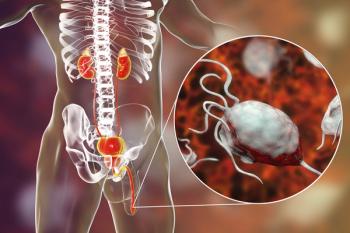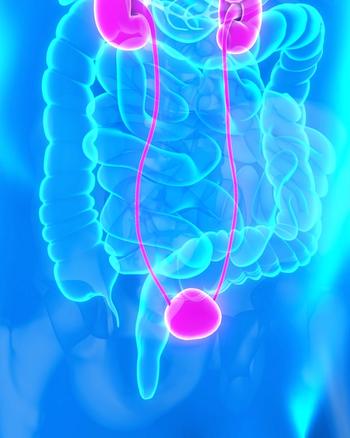
- ONCOLOGY Vol 13 No 7
- Volume 13
- Issue 7
Rising PSA After Local Therapy Failure: Immediate vs Deferred Treatment
Dr. Moul has done a wonderful job of outlining the scope and magnitude of the “phenomenon” of patients found to have a progressively rising prostate-specific antigen (PSA) level after potentially curative local treatment for prostate cancer. His
Dr. Moul has done a wonderful job of outlining the scope and magnitude of the phenomenon of patients found to have a progressively rising prostate-specific antigen (PSA) level after potentially curative local treatment for prostate cancer. His estimate of 50,000+ cases per year would make recurrent prostate cancer the fourth most common malignancy in men.
The literature and clinical trials, as well as discussions among researchers and clinicians, have focused primarily on issues relating to primary management of newly discovered prostate cancers. As a result, decisions about the management of patients with biochemical or PSA-driven recurrences are often made on the basis of little or no objective evidence.
Too Little, Too Late?
Dr. Moul presents an elegant and apparently practical method for predicting the rate of recurrence after radical prostatectomy. Although the statistical and scientific basis of this model appears to be sound, its use in clinical practice often would provide too little, too late, and, in fact, places the emphasis on the wrong event.
One does not need a mathematical model to explain the reasons for the high PSA relapse rate after surgery. They include preexisting metastases, extraprostatic disease, and iatrogenic error. However, one of the biggest factors is judgment. To take a patient who preoperatively had a 75% risk of relapseeg, a patient with a clinical stage T2b NX M0 tumor, a Gleason score of 8, and a preoperative PSA level of 15 ng/mLand be able to accurately predict, following surgery, that he now has a relapse risk of 80% is of very little practical value.
This is even more true in the clinical situation in which immediate adjuvant therapy is not the standard. If the treatment policy is to wait for evidence of recurrence before initiating salvage treatment, there is no need for fancy formulas, or accurate pathologic review, for that matter. One simply needs to wait for that PSA-driven trigger to initiate treatment.
The Important Issue
Thus, the important issue is to determine whether immediate (ie, adjuvant) therapy is preferable to or better than delayed (ie, therapeutic) treatment. In part, this issue revolves around the question of whether patients in need of salvage treatment are, in fact, curable. If one believes that these patients can be cured, an aggressive approach, ie, salvage local treatment, could be contemplated.
How to factor morbidity into the decision-making process remains an unanswered question, however. Much has been made of the contention that salvage radiation therapy after surgery is easier than salvage surgery after radiation. Nevertheless, a recent evaluation of patient-reported quality of life indicated that post-prostatectomy radiation results in significant rates of incontinence (> 50%), incontinence pad use (44%), and erectile dysfunction (95%). It would appear that two local treatments are always more toxic than one, and that we should put our best foot forward, ie, use high-dose radiation therapy.
Salvage Prostatectomy Following Failure of Radiation Therapy
In managing patients who have a rising PSA level following radiation therapy, the decision to use salvage local treatment is often a tough sell. Our criteria for candidates for salvage prostatectomy include patients for whom surgery was initially an option. This includes patients with early-stage disease (T1-2), low-grade Gleason scores (< 8) and low PSA levels(< 15 ng/mL).
Also, at the time of salvage therapy patients should be young enough to tolerate and benefit from the procedure. Since the average age of irradiated patients is 66 years, the average time to treatment failure is 3 years, and more than 50% of patients are not operative candidates at the time of original surgery, it is not surprising that so few patients are candidates for salvage local treatment.
More importantly, however, many patients who initially were candidates for surgery, but who chose to undergo radiation therapy instead, did so in order to minimize the risks associated with surgery, ie, incontinence and impotence. If patients wished to avoid these risks initially, it is unlikely that many would accept a 40% rate of incontinence with salvage prostatectomy when they declined the option because of a 4% risk!
Salvage Radiation Following Failure of Surgery
The issue of when to use salvage radiation following the failure of surgery is somewhat easier, in that the criteria for who probably would not benefit, including node-positive patients, limits this option to a small subset of patients, and most of these patients are still young and healthy at the time of treatment failure. Although therapeutic radiation can enhance postoperative toxicity, the magnitude of this effect is not as great as the enhancement of toxicity by salvage surgery. However, although many patients with an initially low PSA level will remain disease-free for many years, a significant percentage of this group (~ 50%) will suffer a treatment failure within 3 to 5 years, and innovative strategies for managing this group of patients need to be identified.
Summary
In summary, the number of patients with a rising post-treatment PSA level is increasing. Although many of these patients deserve an attempt at a second curative option, this is not always possible or desirable. Much work needs to be done to better characterize the risks and benefits of second-line treatments in this group of patients.
Articles in this issue
over 26 years ago
Discussing Disease Progression and End-of-Life Decisionsover 26 years ago
New Genetic Mechanism Associated With Thyroid-Related Diseasesover 26 years ago
Beyond 5-Fluorouracilover 26 years ago
Nonsurgical Therapy Holds Promise for Basal Cell Carcinomaover 26 years ago
Photodynamic Therapy Effective for Swallowing Problemsover 26 years ago
Novel Gene Therapy to Clear Blood Clots in Leg ArteriesNewsletter
Stay up to date on recent advances in the multidisciplinary approach to cancer.


















































































